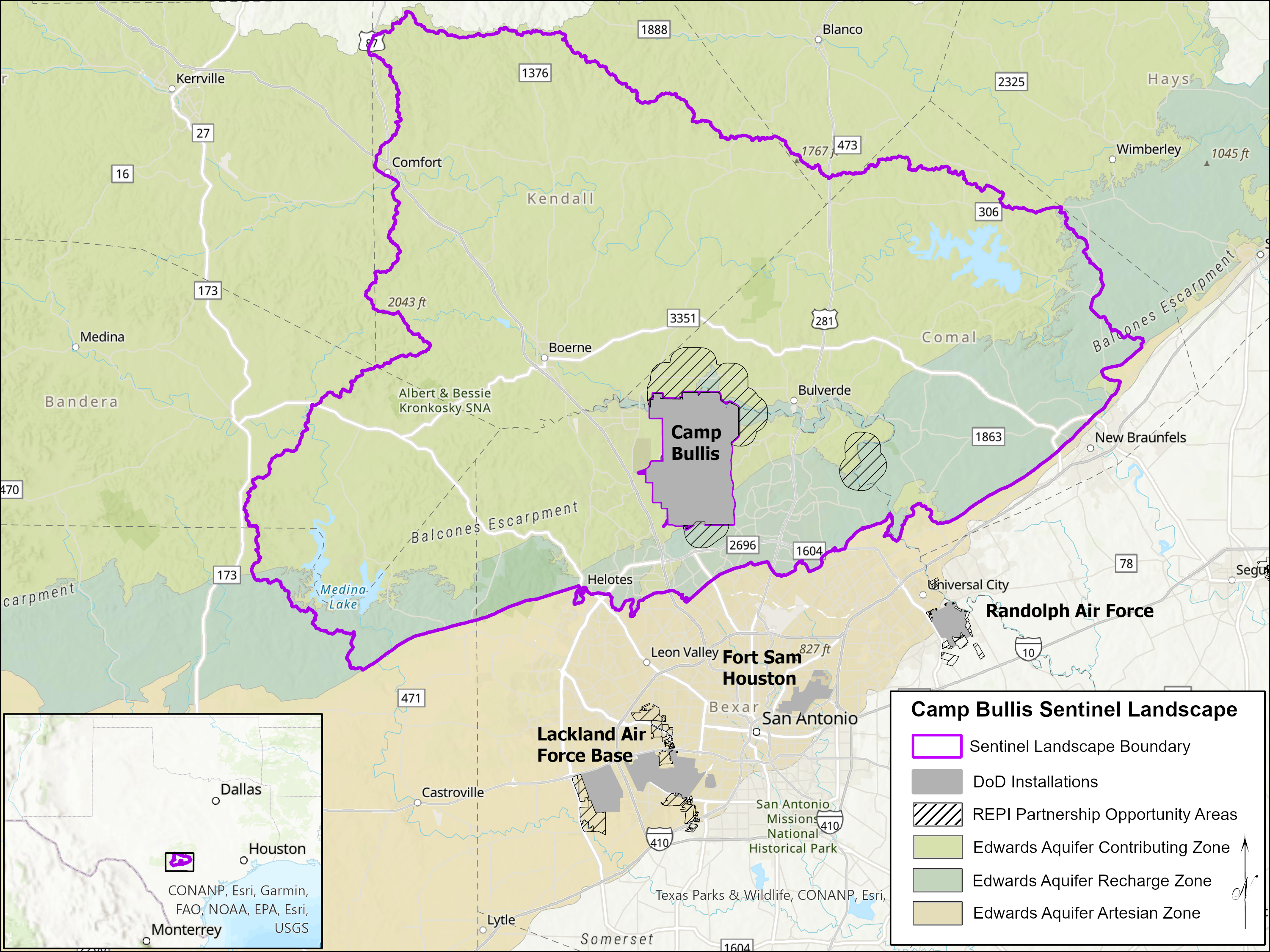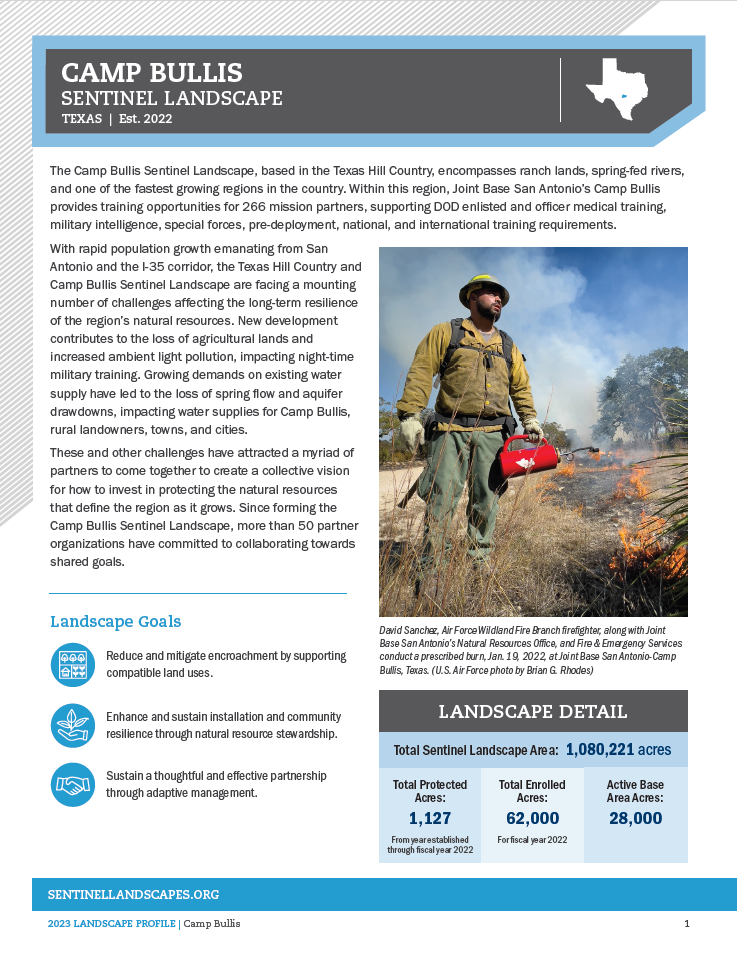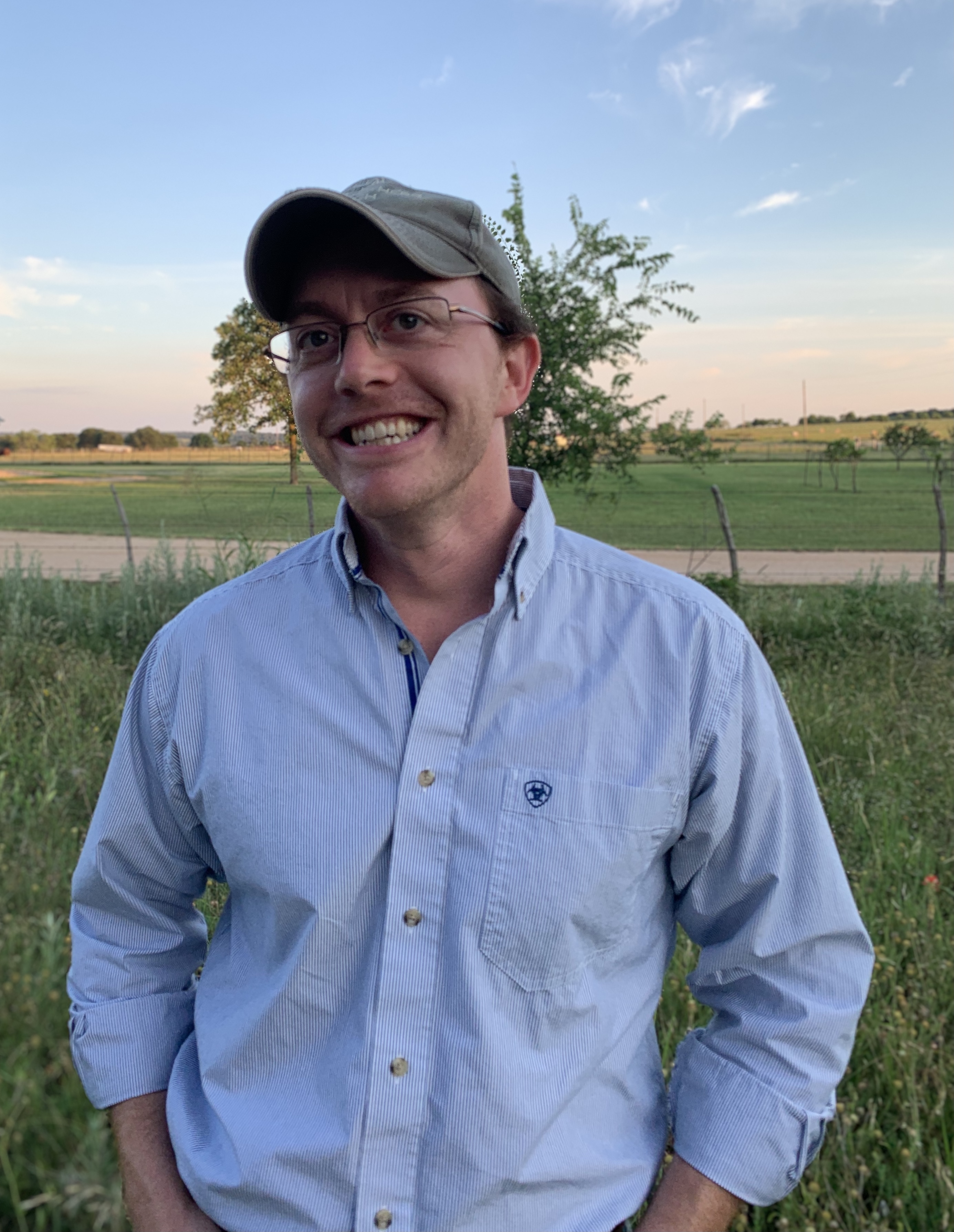Camp Bullis Sentinel Landscape
-
Texas
-
Established 2022
About
The Camp Bullis Sentinel Landscape, based in the Texas Hill Country, encompasses ranch lands, spring-fed rivers, and one of the fastest growing regions in the country. Within this region, Joint Base San Antonio’s Camp Bullis provides training opportunities for 266 mission partners, supporting DoD enlisted and officer medical training, military intelligence, special forces, pre-deployment, national, and international training requirements. With rapid population growth emanating from San Antonio and the I-35 corridor, the Texas Hill Country and Camp Bullis Sentinel Landscape are facing a mounting number of challenges affecting the long-term resilience of the region’s natural resources. New development contributes to the loss of agricultural lands and increased ambient light pollution, impacting night-time military training. Growing demands on existing water supply have led to the loss of spring flow and aquifer drawdowns, impacting water supplies for Camp Bullis, rural landowners, towns, and cities. These and other challenges have attracted a myriad of partners to come together to create a collective vision for how to invest in protecting the natural resources that define the region as it grows. Since forming the Camp Bullis Sentinel Landscape in 2022, more than 50 partner organizations have committed to collaborate towards shared goals.
Map

Total Funding by Partner
| Partner | FY2022 | FY2023 |
|---|---|---|
| DoD | $2.00M | $6.32M |
| State | $1.58M | $5.01M |
| Private | $0.17M | $11.20M |
| Local | $2.91M | $3.50M |
| DOI | $0.0M | $12.50M |
| USDA | $0.0M | $0.36M |
Total Acres Protected and Enrolled
| Acres Protected (Since Designation) | 3233.00 |
|---|---|
| Acres Enrolled (During FY22) | 22830.78 |
Our Partners
Federal Partners
- Camp Stanley
- Federal Emergency Management Agency
- U.S. Air Force Civil Engineering Center
- U.S. Army Corps of Engineers
- U.S. Army Regional Environmental and Energy Office
- U.S. Department of Agriculture, Natural Resources Conservation Service (NRCS)
- U.S. Department of Defense - Joint Base San Antonio
- U.S. Department of Interior, Geologic Survey
- U.S. Department of the Interior, Fish and Wildlife Service (USFWS)
- U.S. DOI – National Park Service Rivers, Trails and Conservation Assistance Program
State Partners
- Texas A&M Forest Service
- Texas A&M University – Natural Resources Institute
- Texas Department of Agriculture
- Texas Division of Emergency Management
- Texas Military Department
- Texas Military Preparedness Commission
- Texas Parks and Wildlife Department
- Texas State Soil & Water Conservation Board
- Texas State University – Meadows Center for Water & the Environment
- University of Oklahoma - SC CASC
- University of Texas – San Antonio
Local and Regional Partners
- Alamo Area Council of Governments
- Bandera County River Authority & Groundwater District
- City of San Antonio
- Cow Creek Groundwater Conservation District
- Edwards Aquifer Authority
- Kendall County Soil & Water Conservation District
- Oaks & Prairies Joint Venture
- San Antonio River Authority
- Trinity Glen Rose Groundwater Conservation District
Private Partners
- Alamo Resource Conservation & Development Area, Inc.
- Bat Conservation International
- Bexar Audubon Society
- Cibolo Center for Conservation
- Cibolo Conservancy
- Comal County Conservation Alliance
- Comal County Friends of the Night Skies
- Compatible Lands Foundation
- Edwards Aquifer Conservancy
- Great Springs Project
- Greater Edwards Aquifer Alliance
- Green Spaces Alliance
- Guadalupe-Blanco River Trust
- Headwaters at the Comal
- Hill Country Alliance
- Hill Country Conservancy
- International Dark Sky Association Texas Chapter
- Kendall County Friends of the Night Skies
- National Cave and Karst Research Institute
- San Antonio Board of Realtors
- San Antonio Chamber of Commerce
- San Antonio Hispanic Chamber of Commerce
- Texas Agricultural Land Trust
- Texas Chapter - Society for Ecological Restoration
- Texas Wildlife Association
- The Nature Conservancy
- Trust for Public Land
Resources
-

2023 Camp Bullis Sentinel Landscape Profile
Meet the Coordinator

Daniel Oppenheimer
daniel@hillcountryalliance.org
Daniel Oppenheimer is the Land Program Director of the Hill Country Alliance (HCA) and Coordinator of the Camp Bullis Sentinel Landscape in Central Texas. Since 2017, Daniel has worked with thousands of private landowners, dozens of agency and non-profit partners, and communities across the Texas Hill Country to support private land stewardship and regional collaboration. Prior to joining HCA, Daniel coordinated the Dolores River Restoration Partnership in southwestern Colorado and eastern Utah. He is a fifth-generation Texan.